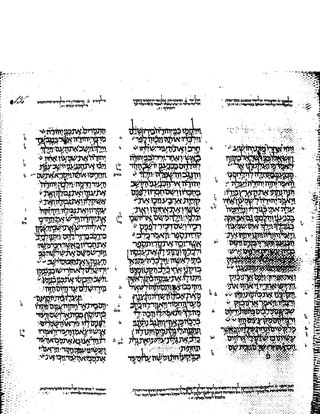
The tree of life is a fundamental archetype in many of the world's mythological, religious, and philosophical traditions. It is closely related to the concept of the sacred tree. The concept of the tree of life may have originated in Central Asia, and absorbed by other cultures, such as Scandinavian mythology and Altai shamanism.

Jujube, sometimes jujuba, known by the scientific name Ziziphus jujuba and also called red date, Chinese date, and Chinese jujube, is a species in the genus Ziziphus in the buckthorn family Rhamnaceae.

The Rhamnaceae are a large family of flowering plants, mostly trees, shrubs, and some vines, commonly called the buckthorn family. Rhamnaceae is included in the order Rosales.

Ziziphus is a genus of about 40 species of spiny shrubs and small trees in the buckthorn family, Rhamnaceae, distributed in the warm-temperate, subtropical and tropical regions of the world. The leaves are alternate, entire, with three prominent basal veins, and 2–7 cm (0.79–2.76 in) long; some species are deciduous, others evergreen. The flowers are small, inconspicuous yellow-green. The fruit is an edible drupe, yellow-brown, red, or black, globose or oblong, 1–5 cm (0.39–1.97 in) long, often very sweet and sugary, reminiscent of a date in texture and flavour.

According to the New Testament, a woven crown of thorns was placed on the head of Jesus during the events leading up to his crucifixion. It was one of the instruments of the Passion, employed by Jesus' captors both to cause him pain and to mock his claim of authority. It is mentioned in the gospels of Matthew, Mark and John, and is often alluded to by the early Church Fathers, such as Clement of Alexandria, Origen and others, along with being referenced in the apocryphal Gospel of Peter.
The lotus tree is a plant that is referred to in stories from Greek and Roman mythology.

Ziziphus mauritiana, also known as Indian jujube, Indian plum, Chinese date, Chinee apple, ber,beri and dunks is a tropical fruit tree species belonging to the family Rhamnaceae. It is often confused with the closely related Chinese jujube, but whereas Z. jujuba prefers temperate climates, Z. mauritiana is tropical to subtropical.

The Sidrat al-Muntaha is a large lote tree or Sidr tree that marks the utmost boundary in the seventh heaven, which no one can pass. It is called Sidrat al-Muntaha because the knowledge of the angels stops at that point, and no one has gone beyond it. During the Isra and Mi'raj, Muhammad traveled with the angel Gabriel to the tree where Gabriel stopped. Beyond the tree, Allah instructed Muhammad about the five daily prayers.
In religious or mythological cosmology, the seven heavens refer to seven levels or divisions of the Heavens. The concept, also found in the ancient Mesopotamian religions, can be found in Judaism, Christianity, and Islam; a similar concept is also found in some other religions such as Hinduism. Some of these traditions, including Jainism, also have a concept of seven earths or seven underworlds both with the metaphysical realms of deities and with observed celestial bodies such as the classical planets and fixed stars.

Kil'ayim is the fourth tractate of Seder Zeraim of the Mishnah, dealing with several biblical prohibitions of mixed species, namely, planting certain mixtures of seeds, grafting different species of trees together, growing plants other than grapevines in vineyards, crossbreeding animals, working a team of different kinds of animals together, and mixing wool and linen in garments.

Paliurus spina-christi, commonly known as Jerusalem thorn, garland thorn, Christ's thorn, or crown of thorns, is a species of Paliurus native to the Mediterranean region and southwest and central Asia, from Morocco and Spain east to Iran and Tajikistan.
Sidr or SIDR may refer to:
Morocco provides a refuge for a rich and diverse flora with about 4,200 taxa, of which 22% are endemic. The phytogeographic zones of Morocco comprise 8 zones: the Mediterranean zone, the Cedar zone (1000-2000m), the sub-Alpine zone (2,000-2,500m), the Alpine zone (2,500m+), the semi-desert scrub zone, the Reg, the sandy desert zone and the oases.

Al-Na'ani, also called Al-Ni'ana, was a Palestinian Arab village in the Ramle Subdistrict of Mandatory Palestine. It was depopulated during the 1948 Arab–Israeli War on May 14, 1948, by the Givati Brigade during Operation Barak. It was located 6 km south of Ramle.

Leucocyanidin is a colorless chemical compound that is a member of the class of natural products known as leucoanthocyanidins.

Ziziphus spina-christi, known as the Christ's thorn jujube, is an evergreen tree or plant native to northern and tropical Africa, Southern and Western Asia. It is native to the Levant, East Africa, Mesopotamia and some tropical countries. Fruit and leaves from the tree were used in preparing ancient Egyptian foods and cultural practices.

Judges 9 is the ninth chapter of the Book of Judges in the Old Testament or the Hebrew Bible. According to Jewish tradition the book was attributed to the prophet Samuel, but modern scholars view it as part of the Deuteronomistic History, which spans the books of Deuteronomy to 2 Kings, attributed to nationalistic and devotedly Yahwistic writers during the time of the reformer Judean king Josiah in 7th century BCE. This chapter records the activities of judge Gideon's son, Abimelech. belonging to a section comprising Judges 6 to 9 and a bigger section of Judges 6:1 to 16:31.













